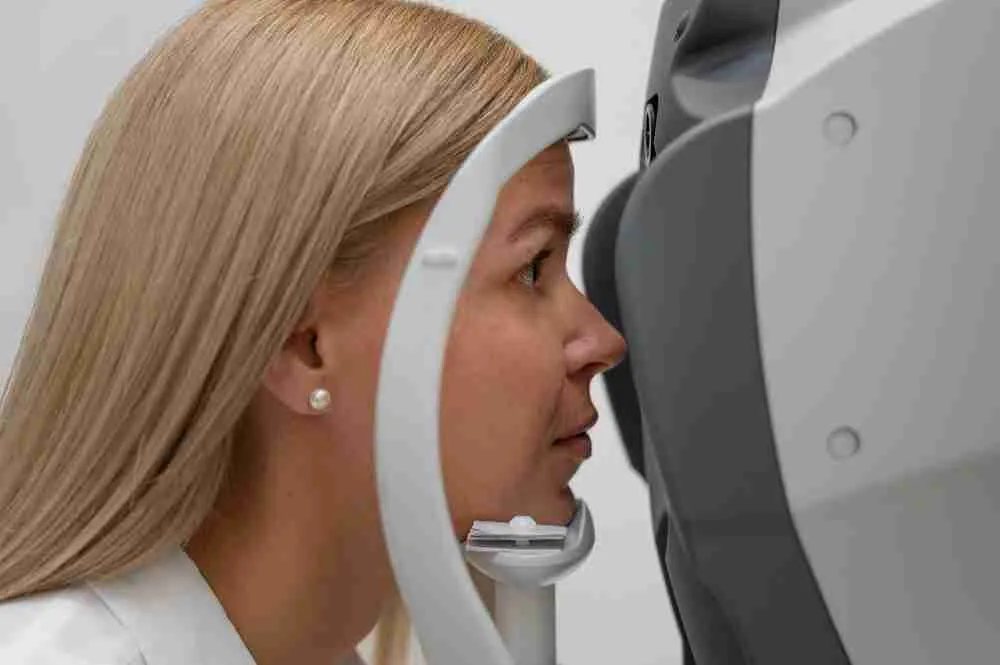Do you wear contact lenses every day without thinking twice? If yes, you're not alone. More than 800,000 people in India are using contact lenses, and the number is climbing fast. Back in the 1990s, the user count hovered around 150,000. Today, that number is surging with a 15–20% rise each year. Still, the majority have no clue about the long-term risks of contact lens use.
Contacts are a major lifestyle upgrade. They’re light, invisible, and make daily life easier, no foggy glasses during workouts or rainy walks. But here's the flip side: many users skip hygiene steps, wear them longer than they should, or even fall asleep with them on. That’s when contact lens problems start stacking up.
In this blog, we’ll break down what really happens when you wear contacts every day. We’ll look at real side effects, not just dry eyes, but deeper concerns like corneal ulcers, diminished corneal reflex, and more.
4 Side Effects Of Wearing Contact Lenses Every Day
Daily use of contact lenses feels normal once you're used to it. But the eyes don’t always agree. Wearing lenses for long hours creates friction, blocks oxygen, and dries out your cornea. Roughly 50% of users admit they fall asleep wearing lenses now and then. This may sound small, but it’s enough to trigger serious problems.
Let’s explore what happens to your eyes with long-term use of contact lenses, and why so many wearers eventually deal with discomfort, or worse.
1. Dry Eye
Dry eyes top the list of common contact lens issues. Lenses sit on your tear film and absorb the moisture to stay soft. This often depletes the natural lubrication of your eyes, especially if you stare at screens all day. As a result, your eyes become itchy, red, and irritated.
If ignored, dry eyes can turn into Dry Eye Syndrome, which isn’t just annoying; it can cause scarring on your cornea. And corneal scarring is painful and not easily reversible. Using lubricating drops may help, but most people don’t follow up on this until it’s too late.
In cases like this, dry eyes from contact lenses aren’t a minor side effect. It can stop you from wearing contacts completely if the damage progresses.
2. Red Eye Or Conjunctivitis
Another frequent issue is red eye, commonly linked with Giant Papillary Conjunctivitis (GPC). Lenses left in too long turn into a sponge for bacteria, dust, and debris. If you sleep or nap with lenses, even once in a while, you increase the risk of eye infections from contact lenses.
When the cornea doesn’t get enough oxygen, your immune system weakens in the eye. This makes it easier for bacteria to create an infection. You’ll notice puffiness, discharge, and watery eyes. At this stage, you’ll have to stop wearing contacts for days, sometimes weeks.
To reduce this risk, clean your lenses with recommended solutions only. Never use tap water. And no matter how tired you are, never sleep with lenses in.
3. Cornia Ulcer
Corneal ulcers are one of the most painful and dangerous contact lens side effects. They begin as open sores on the cornea, usually caused by bacteria or fungi that get trapped between the lens and your eye.
If the infection goes untreated, ulcers can lead to permanent vision loss. You may need a corneal transplant, which is costly and not always successful.
Redness, severe pain, blurred vision, and a white spot on the cornea are signs of an ulcer. Sadly, by the time most people realize it’s serious, the damage is already done. This is a top reason why you should never overuse your lenses and must maintain strict hygiene.
4. Diminished Corneal Reflex
Your eyes have a built-in protective system: the corneal reflex. If something comes close to your eye, the lids automatically blink to protect it. But long-term use of contact lenses can dull this natural reaction.
Why does this happen? When your eye gets used to having a lens in contact all day, it stops reacting to foreign stimuli. Over time, this weakens the blink response. That means dust or even sharp particles could harm your eyes without you blinking to protect them.
This is one of the lesser-known disadvantages of contact lenses, yet it affects people who wear them for years without breaks.
Common Contact Lens Problems and Prevention Tips
|
Contact Lens Problem |
Risk Level |
Symptoms |
Prevention Technique |
|
Dry Eye |
High |
Redness, itching, burning |
Use preservative-free eye drops daily |
|
Conjunctivitis (GPC) |
High |
Puffy eyelids, discharge, red eye |
Don’t wear lenses overnight; clean daily |
|
Corneal Ulcer |
Severe |
Eye pain, blurred vision |
Replace lenses on time, no reuse of solution |
|
Diminished Corneal Reflex |
Moderate |
Reduced blink response |
Limit usage; switch to glasses often |
|
Allergic Reactions |
Moderate |
Itchy, watery eyes |
Use daily disposables, avoid old lenses |
Additional Risks Of Contact Lens Use You Might Overlook
1. Allergic Reactions To Contact Lenses
Some users develop allergic responses to the lens material or to protein buildup. These reactions are different from infections. Symptoms include swollen lids, extreme tearing, and intolerance to light. In such cases, daily disposable lenses or switching to glasses might be the only fix.
2. Long-Term Use Can Alter Your Eye Shape
Contacts exert pressure on your cornea. Over time, this can cause the cornea to thin or warp, especially in those with existing eye conditions like keratoconus. Once the eye changes shape, you may no longer tolerate lenses, or even glasses, for correction. This effect is rare, but real.
How Safe Are Contact Lenses, Really?
They’re generally safe, but only when used correctly. Risks increase when you skip basic care: washing hands before inserting, using the same pair beyond expiry, or storing them in unsafe containers. It’s not about the lens. It’s about how you treat them.
Contact Lenses Vs Glasses: Which One Is Better For Daily Use?
Let’s get this clear. Contacts and glasses each have pros and cons. But when it comes to daily, extended wear, glasses are safer. Here’s a quick view:
-
Contacts give more freedom during sports or travel, but increase infection risk if hygiene slips.
-
Glasses are easier to manage, cost less over time, and don’t touch your eye directly.
For long hours indoors, especially at home or on screens, glasses are a better choice. Reserve contact lenses for outside use or short events.
Contact Lens Safety Tips From Eye Experts
Here are expert-backed ways to keep your eyes safe while using contact lenses:
-
Stick to the wearing schedule recommended by your eye doctor.
-
Never wash lenses with tap water.
-
Change lens cases every 1–3 months.
-
Take lens-free breaks to allow your eyes to breathe.
-
Get an eye check-up every year, even if your vision feels fine.
Final Thoughts
Yes, contact lenses are a modern convenience. They free you from bulky frames, give you a cleaner look, and fit seamlessly into daily life. But that doesn't mean they're without risks. Whether it’s dry eye, red eye, corneal ulcers, or diminished reflexes, the problems can escalate if you don’t stay careful.
The idea isn’t to fear contact lenses. It’s to use them wisely. Let your eyes breathe. Use eyeglasses at home, give yourself regular breaks, and never, ever sleep with your lenses on.
वारंवार विचारले
How many hours per day is it safe to wear contact lenses?
Most eye specialists suggest wearing them no more than 8–10 hours a day. Wearing longer increases dryness and infection risks.
Can I swim or shower with contact lenses on?
No. Water carries bacteria that can stick to your lenses and cause severe infections like Acanthamoeba keratitis.
What are the first signs of an eye infection from contact lenses?
Watch for blurred vision, eye pain, redness, and light sensitivity. If any of these show up, remove your lenses and see an eye doctor immediately.
Do contact lenses make eyesight worse over time?
Not directly. But wearing them for too long without breaks can affect the cornea, which may temporarily change your vision.
Are daily disposable lenses better than monthly lenses?
Yes, especially for people with allergies or sensitive eyes. They lower the risk of protein buildup and eye infections.

लिहिलेले







